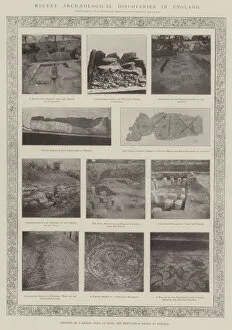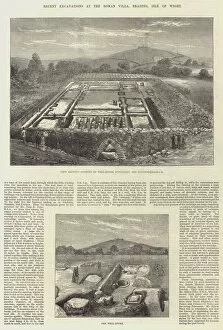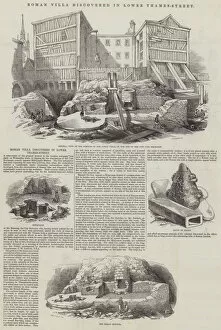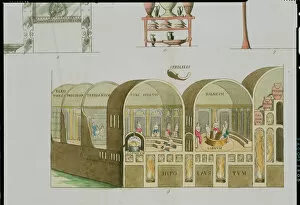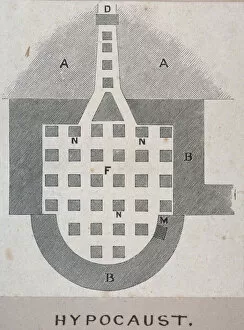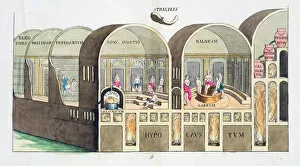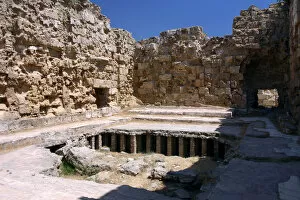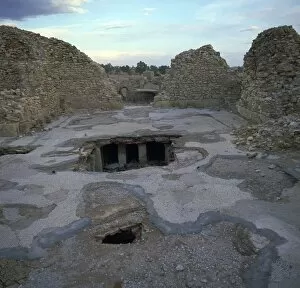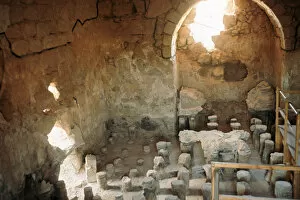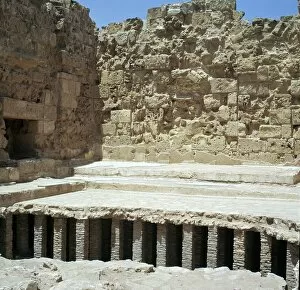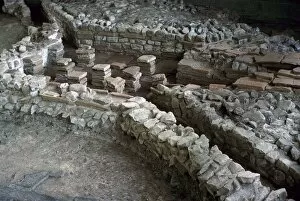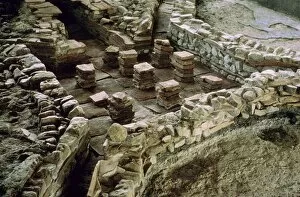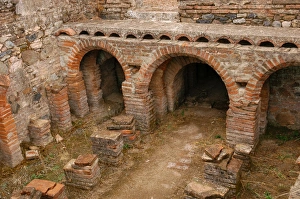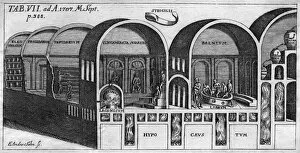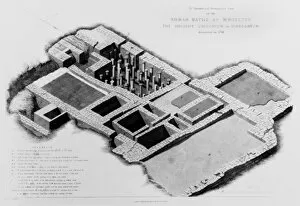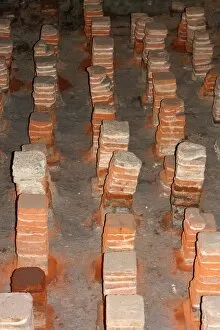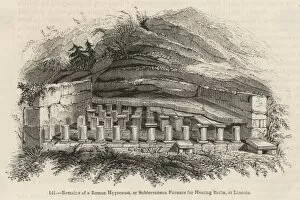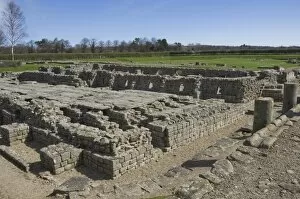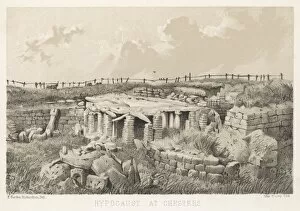Hypocaust Collection
The captivating world of the hypocaust, an ingenious Roman heating system, comes to life through a series of fascinating archaeological discoveries
All Professionally Made to Order for Quick Shipping
The captivating world of the hypocaust, an ingenious Roman heating system, comes to life through a series of fascinating archaeological discoveries. In Lower Thames-Street, London, engraved remnants transport us back in time as we uncover the secrets of this ancient technology. Recent excavations at the Roman Villa in Brading, Isle of Wight reveal intricate details of these hypocausts that once warmed the floors above. Lithographs from Basel, Switzerland and Bergamo, Asia Minor showcase grandiose Roman baths where citizens luxuriated amidst heated pools and steam rooms. Delving deeper into history, engravings from Walesby unveil hidden treasures beneath piers - flue-tiles and other artifacts belonging to a long-lost Roman Villa emerge from their slumber. The allure continues with another engraving depicting the discovery of a remarkable Roman villa in Lower Thames-Street; its remains whisper tales of opulence and sophistication. Journeying further north to Walls Castle in Cumberland reveals yet more evidence of Rome's reach - intriguing engravings bring forth images of well-preserved structures hinting at lavish bathing complexes nestled within these ancient walls. A stunning aquatint plate showcases magnificent Roman Baths while a black-and-white photograph unveils the recently unearthed villa at Darenth in Kent. Surprisingly ahead-of-their-time central heating systems make an appearance too - astonishingly dating back 1800 years ago. And for those seeking technical insights into this marvel, a plan discovered on the site of Coal Exchange City provides an intricate blueprint while a cross-section illustration offers glimpses into how these thermal wonders were constructed. These captivating hints offer mere glimpses into the vast realm that is hypocaust archaeology – each discovery adding new layers to our understanding not only of ancient technologies but also shedding light on daily life during one of history's most influential civilizations.


